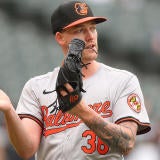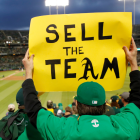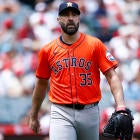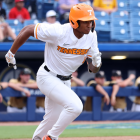At this writing, the Cleveland Indians are a mere one game above .500 with a run differential of minus-6. As well, they trail the Twins by a hefty 10.5 games in the AL Central.
Those facts taken by themselves would seem to cast the Indians as likely sellers as we work our way toward the July 31 trade deadline. However, it's never that simple, and that's especially the case with the 2019 Indians. Really, it's possible to see the Indians going any of the three possible directions -- i.e., buy, sell, or hold. That's why Cleveland is in some ways a wild card whose organizational tack, whatever it turns out be, could shape the 2019 deadline.
With that in mind, let's take a look at how each of those three scenarios could play out between now and July 31 ...
The Indians as buyers
While the AL Central deficit is noted above, let's not forget that there's two wild-card berths in each league. Right now, the Indians are just two games out of playoff position (if the season ended right now, then the 35-30 Rangers would be the road wild-card team). What's more, the Indians project well moving forward.
According to the SportsLine Projection Model (@SportsLine on Twitter), the Indians are forecast to win 58 percent of their remaining games and are projected for 89 wins. That in turn gives them a 34.7 percent chance of making the postseason. While their odds of hawking down the Twins are long, they do have playable odds when it comes to making the AL Wild Card Game.
As well, the Indians have an accommodating schedule leading up to the deadline. They have 23 games on the schedule between now and the break, and of those 23 games 19 come against losing teams. Of those 23, 15 come against four of the worst teams in baseball -- the Tigers, Royals, Blue Jays, and Orioles. Very likely, the Indians are going to improve their standing over the next five or six weeks and look more like real contenders by the time July 31 comes around.
On top of all that, they have clear needs in the outfield and potentially the rotation (the statues of Corey Kluber and Carlos Carrasco are still uncertain). Those needs, obviously, could be addressed via trade.
The Indians as sellers
If the Indians don't play better in the weeks to come, they could fully embrace the rebuild. That could involve trading names like Francisco Lindor, Brad Hand, Carlos Santana, Trevor Bauer, Roberto Perez, and Adam Cimber for a hefty package of young, controllable talent. If Kluber and or Carrasco return in time to flash health and effectiveness before July 31, then they'll also make intriguing trade options.
Would ownership be inclined to do such a thing? Well, they're obviously not committed to winning. This offseason the Indians were coming off three straight division titles. Despite clear roster needs around what looked like a powerhouse rotation and an MVP-caliber left side of the infield, the team did almost nothing in net terms. They let Michael Brantley walk and didn't replace him, which left Cleveland with one of the weakest outfields in baseball. Andrew Miller walked, as did Lonnie Chisenhall. Yes, they obtained Carlos Santana and Jake Bauers, but they did so at a cost of Edwin Encarnacion and Yandy Diaz. That's wheel-spinning. Coming off a winter in which ownership ordered a division favorite to shed payroll, it's not a leap to think those same owners would use a self-inflicted mediocre first half as rationale for a teardown.
The Indians do nothing
Maybe this is the most likely tack. They can avoid the outward ugliness of sell-off while still not investing in the product. That keeps the second wild-card spot in play, especially if Kluber, Carrasco, and Mike Clevinger (and Jose Ramirez) get back to form. As well, those trade-bait names ticked off above are all under team control through at least next season, so a deep rebuild could be undertaken over the offseason without greatly diminishing the market of appeal of those players. That's especially the case if Kluber and Carrasco author strong second halves.
Again, given the Dolan family's demonstrated lack of commitment lately, it wouldn't be surprising if the Indians just sat things out in the hopes of finding clarity over the winter. If the Indians go on a run or alternatively struggle over the next few weeks, though, they may pick a more definitive lane. What they do will of course affect others. They could add some of the most coveted names of all to the list of players on the block, or they could cast their lot with the contenders angling for the same things they need -- thus upping the asking prices. The Indians will have an effect unless, of course, they choose not to.






















